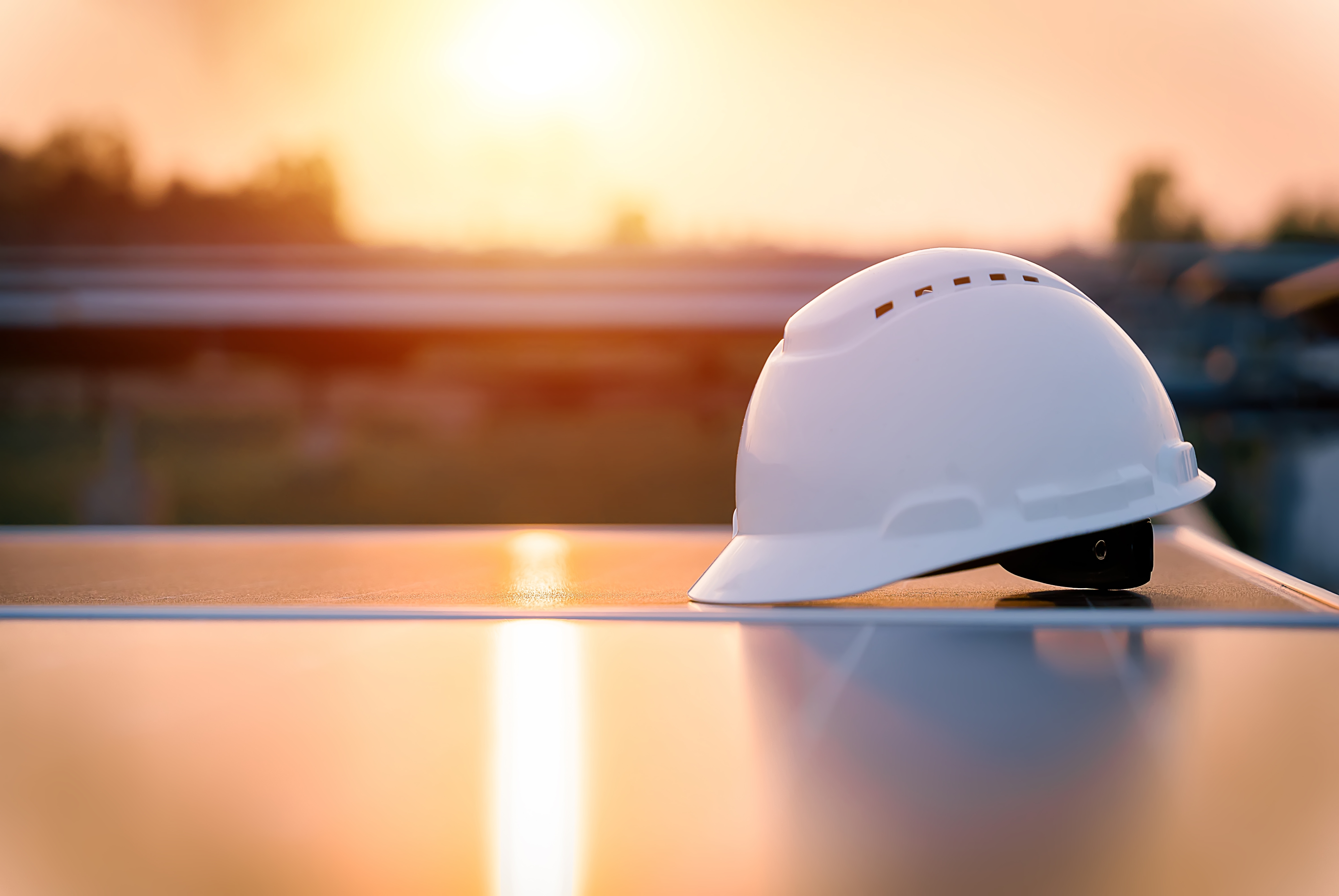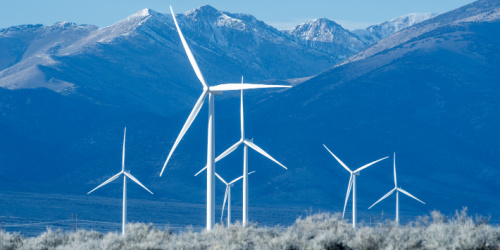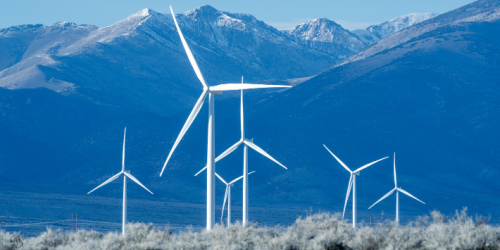2024 is a big year for renewables projects and as a specialist in delivering teams and individual consultants to global renewables partners, we have our own expert insights into the growth, opportunities and projects to watch.
We cover the latest developments in the US each month in our regular series: Renewables Roundup, which you can follow on Youtube, LinkedIn or our website. And in this article, we'll be looking ahead at even more of the biggest planned projects in the USA, Europe and Asia, plus the factors that are making 2024 the biggest year yet for the renewable energy sector.

The bright hope of solar projects
It’s going to be an exciting year for massive solar projects. Among these new build power plants and plant upgrades, in the US, India and China we’re going to see some of the largest solar initiatives ever undertaken.
In a recent report, the International Energy Agency (IEA) said that global solar generation will grow to almost 310 GW in 2024, supported by lower module prices, the increasing popularity of distributed PV systems, and a policy push for large-scale deployment.
In the US, we’re looking forward to seeing the nation’s largest solar and battery project - the CD Solar Project, submitted by EDF Renewable Development Inc. This mammoth, multi-billion dollar project would cover an immense 18,000 acres of Nevada land and will take two years to build. Another one to watch in the US is the Gemini Solar Project, a huge solar farm that’s expected to offset some 384,000 metric tons of CO2 emissions each year…the equivalent to taking more than 80,000 cars off the road!
While on the subject of giant solar projects, we’ve been watching the upgrades at India’s Bhadla Solar Park with some fascination. This mega facility covers 14,000 acres of desert in Rajasthan, and recent upgrades have raised the facility’s total capacity to a whopping 2.7GW! Some additional stories we’ve covered through our renewables roundup includes the great news that BP will acquire the remaining 50% of Lightsource BP, with ambitious plans to develop utility-scale solar and battery storage assets and a development pipeline of 61GW spanning over 19 countries.
Other recent news of note includes the S&P Global announcement that utility-scale solar in the US “soared” in the third quarter of 2023, with developers connecting 4.1GW to the grid. This represents a 107% increase from the same quarter last year. Compare this to Q3 of 2022, where 1.9GW was connected, shows that 2023 outperformed 2022 by 2.1GW. The major research and data provider tells us that this year-over-year increase is a sign of the resurgence of an industry battered by inflation and supply chain constraints. Positive news indeed as we move into Q1 of 2024.
In recent months we also covered the news that TotalEnergies has secured its position as the world's largest top solar PV developer with a total capacity of 41.3GW. Not only did they lead in capacity, they are also the top company for under-construction and power purchase agreement (PPA) contracted capacities with 29.3GW of projects in the pipeline.
From a technological advancement perspective, we’re looking forward to seeing the rollout of ‘bifacial solar panels’ that capture sunlight on both sides. It’s envisaged that this technology will be extremely efficient, making solar energy more viable and competitive with traditional energy sources.

A strong wind of change
Through 2024 we’ll be watching the development of large-scale offshore wind turbines with gigawatt capacities with much interest. The share of offshore wind energy is expected to grow fast, with more countries, including the UK, US, Canada, India and China, all expanding their offshore capabilities.
Recently the US push for clean energy passed a huge milestone as mega offshore wind farms started powering the domestic grid for the first time ever. Avangrid and Copenhagen Infrastructure Partners, the owners of the Vineyard Wind project, have just announced that they’ve produced the first electricity from one turbine at what will be a 62-turbine wind farm 15 miles off the coast of Massachusetts.
Still in the US, through our renewables monthly roundup, we recently focused on the state of New York, which selected the Attentive Energy One project for a 25-year contract to supply 1.4GW of renewable electricity to the state. The project will be carried out by partners Total Energies, Corio Generation and Rise Light & Power. The Attentive Energy One project will see the construction of a new General Electric facility to manufacture offshore wind turbine blades and nacelles, unlocking $300 million in investment in various community projects across New York State.
We’re pleased to note that the offtake auction schedule continues to look healthy for 2024. There’s some 47.5GW slated for the year ahead (40GW in Europe), plus there’s a similar situation for lease rounds with 33.5GW of leases under the hammer. This includes projects across the UK, the US, Australia, Belgium, Colombia, Denmark, Estonia, Finland, France, India, Japan, Lithuania, Netherlands, Norway, Portugal, Spain and Uruguay. We’re told that the rate of lease activity has grown fast over the last 24 months, with 43.8GW-worth of sites awarded in 2023, a third of which was for floating wind projects.
Store it away for a rainy day!
As renewable energy technologies continue to advance, this will catalyse the development of energy storage systems. The two go hand-in-hand: advanced battery systems that last longer than lithium options are needed if we are to compensate for the intermittent availability of nature’s renewable energy sources, particularly faced with the potential for climate change-induced, extreme weather events.
One project we’ve been keeping a keen eye on is the Waratah Super Battery (WSB) project, which will be the largest BESS in the world to date. A collaboration between investment firm BlackRock, Akaysha Energy, and the Oregon-based Powin, this inspiring project is expected to be completed in 2025 and will provide support for the rapidly expanding solar infrastructure in New South Wales, Australia.
At CMC we’re expecting to see plans for Battery Energy Storage Systems (BESS) emerging in all kinds of places, from residential areas and workplaces through to entire neighbourhoods. There’s going to be more of them, and the technology will continue to improve in terms of charging speeds, energy density capability and lifecycle efficiency. The maturing tech should lead to lower prices, which in turn is hoped will benefit solar photovoltaic (PV) investment, making solar-plus-storage solutions more economically viable.
True Expertise Delivered
CMC delivers construction and installation services to renewable energy projects in the US, Europe and Asia. Our experts are available as individuals or teams to support wind and solar projects anywhere in the world. Get in touch with our renewable energy specialists today to learn more about partnering with CMC.


